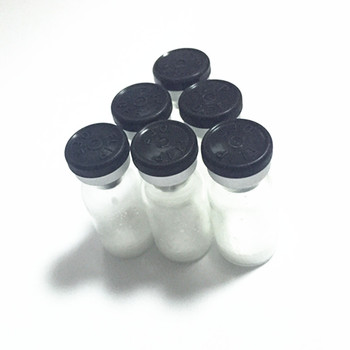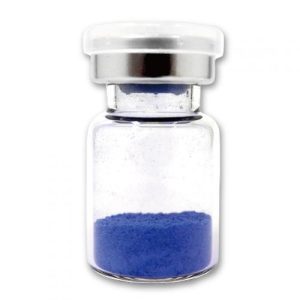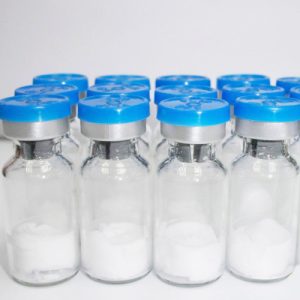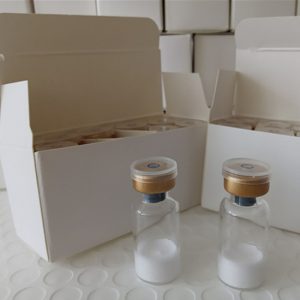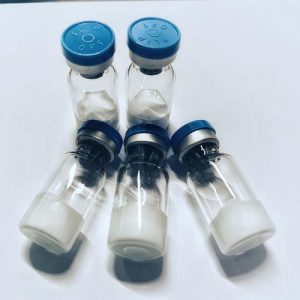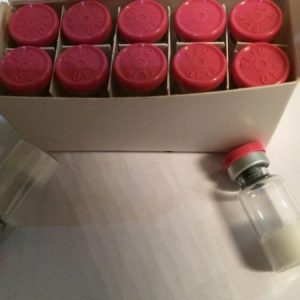Uses IGF-1 (insulin-like growth factor I) is a growth hormone that rapidly stimulate the phosphorylation on tyrosine of a 160 kDa cytosolic protein (pp160) in intact 3T3-L1 adipocytes
Uses Insulin-like Growth Factor-I from mouse has been used:
for the preparation of growth factor cocktail
as a media supplement for mouse embryonic fibroblasts culture
as a media supplement to serve as a positive control to investigate
the effects of Angelica sinensis on myotubes
Definition
Insulin-like growth factor 1 (IGF-1), also called somatomedin C, is a protein hormone that plays an important role in childhood growth and continues to have anabolic effects in adults. Measuring IGF-1 levels is used to test for growth hormone deficiency and excess in acromegaly and gigantism. This certified Snap-N-Spike solution of the fully-intact igf des 1 protein is suitable for use as starting material for calibrators and controls in IGF-1 LC/MS testing applications.
General Description
IGFs (insulin like growth factors) are predominantly produced by the liver, although a variety of tissues produce the IGFs at distinctive times. The IGFs belong to the Insulin gene family, which also contains insulin and relaxin. The IGFs are similar by structure and function to insulin, but have a much higher growth-promoting activity than insulin. IGF-I expression is regulated by growth hormone. IGF-I signal through the tyrosine kinase type I receptor (IGF-IR). Mature IGFs are generated by proteolytic processing of inactive precursor proteins, which contain N-terminal and C-terminal propeptide regions. Recombinant human IGF-I and IGF-II are globular proteins containing 70 and 67 amino acids, respectively. And three intra-molecular disulfide bonds.
Biological Activity
IGF-1 belongs to the insulin-like growth factor family of signaling molecules that play critical roles in cellular energy metabolism and in growth and development, especially prenatal growth.Also known as somatomedin C, is secreted from the liver into circulation in a process regulated by pituitary growth hormone (GH) and so it mediates the growth-promoting activity of GH. In the developing embryo IGF-I is expressed primarily by mesenchymal-derived cells. After birth igf des 1 expression in most extrahepatic tissues declines and hepatic expression of it becomes GH-regulated.
Expression of igf des 1 peptide outside the liver is regulated differently, depending on the specific tissues. For example, gonadotropins and sex steroids regulate IGF-I expression within the reproductive system, while parathyroid hormone and sex steroids regulate IGF-I expression in bone. It is produced in several human tumors. It is mitogenic for a variety of cells including fibroblasts, osteoblasts, smooth muscle cells, fetal brain cells, neuroglial cells, and erythroid progenitor cells. IGF-I exerts its actions exclusively through the IGF-I receptor (IGF-IR). it induces endothelial cell migration and is involved in the regulation of angiogenesis.
Biochem/physiol Actions
The IGFs (insulin like growth factors) are mitogenic polypeptide growth factors that stimulate the proliferation. And survival of various cell types including muscle, bone, and cartilage tissue in vitro. IGF1 is an essential component for embryonic and postnatal skeletal development. Absence of IGF1 in mice negatively affects bone development, causes hypomineralization of skeletons and growth plate disturbances. It is also associated with cancer progression. It can suppress cell death and provides resistance to chemotherapy as well as radiation therapy.
Clinical Use Protein of rDNA origin that has orphan drug status and is used in treating major burns requiring hospitalization.
More Introduction:https://en.wikipedia.org/wiki/Des(1-3)IGF-1
